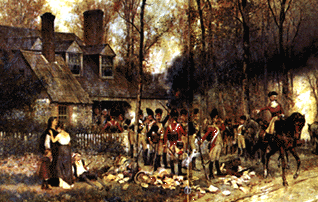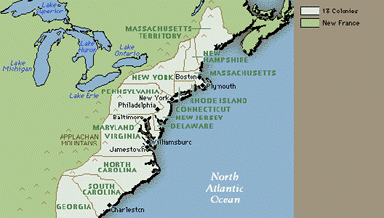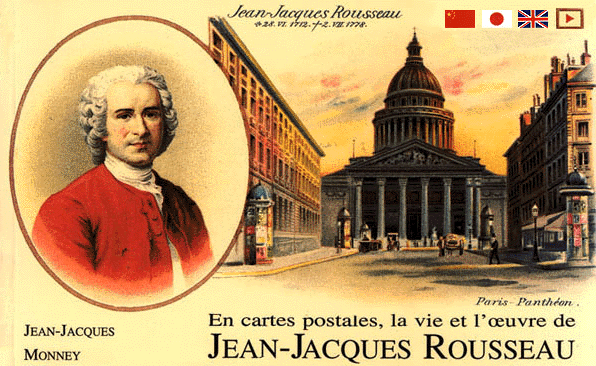
British soldiers sack a New England Home
No revolution, of course, can be fully exported. A vast array of factors that include the political and social backgrounds of a people will shape the precise course of any and all revolutions.

British soldiers sack a New England Home
In 1606, the British began to colonize America when a group of English set up a plantation in Virginia. By 1733, there were already thirteen colonies in America along the Atlantic coast. The colonists, who were mainly English, totalled one and a half million. There were also Irish, Scottish, Dutch, German, Swedish and other settlements in these colonies.

But Britain wanted to increase
its national income by decreasing imports and increasing exports. So Britain
began to treat its colonies as sources of raw materials for the British
industries and as markets for British goods.In the early 18th century,
the British Parliament passed a series of laws to control trade in the
American colonies. But these laws were not strictly enforced until 1763
when Britain wanted to raise more money from the colonies.
The Seven Year's War created
problems for the British. Britain had spent so much money on the War that
her national debt had nearly doubled. Also, Britain had to find ways to
strengthen her control over her enlarged American Territory. Therefore,
after 1763, the Parliament passed a number of laws to tighten economic
control over the colonies. Britain tried to make more profits from the
colonies. This led to the conflicts between the British government and
the colonists.

The colonists were already accustomed to governing themselves and had developed a sense of unity and independence. They began to think of themselves as Americans rather than English. When Britain tightened her economic control over them, the colonists deeply resented what they thought was British interference in their affairs.